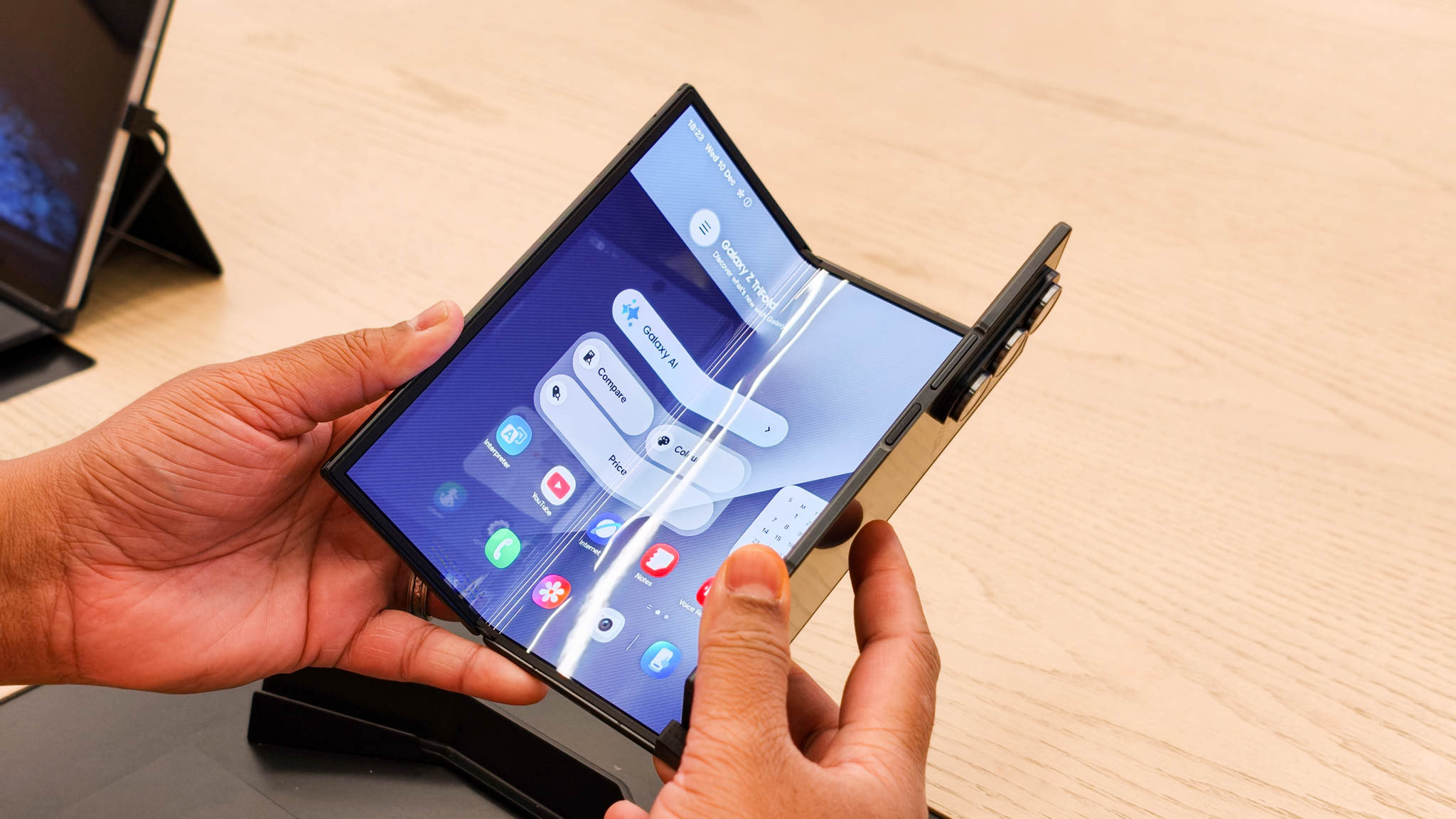Pixel 4 vs. iPhone 11 night mode battle: Touring NYC at 2 a.m.
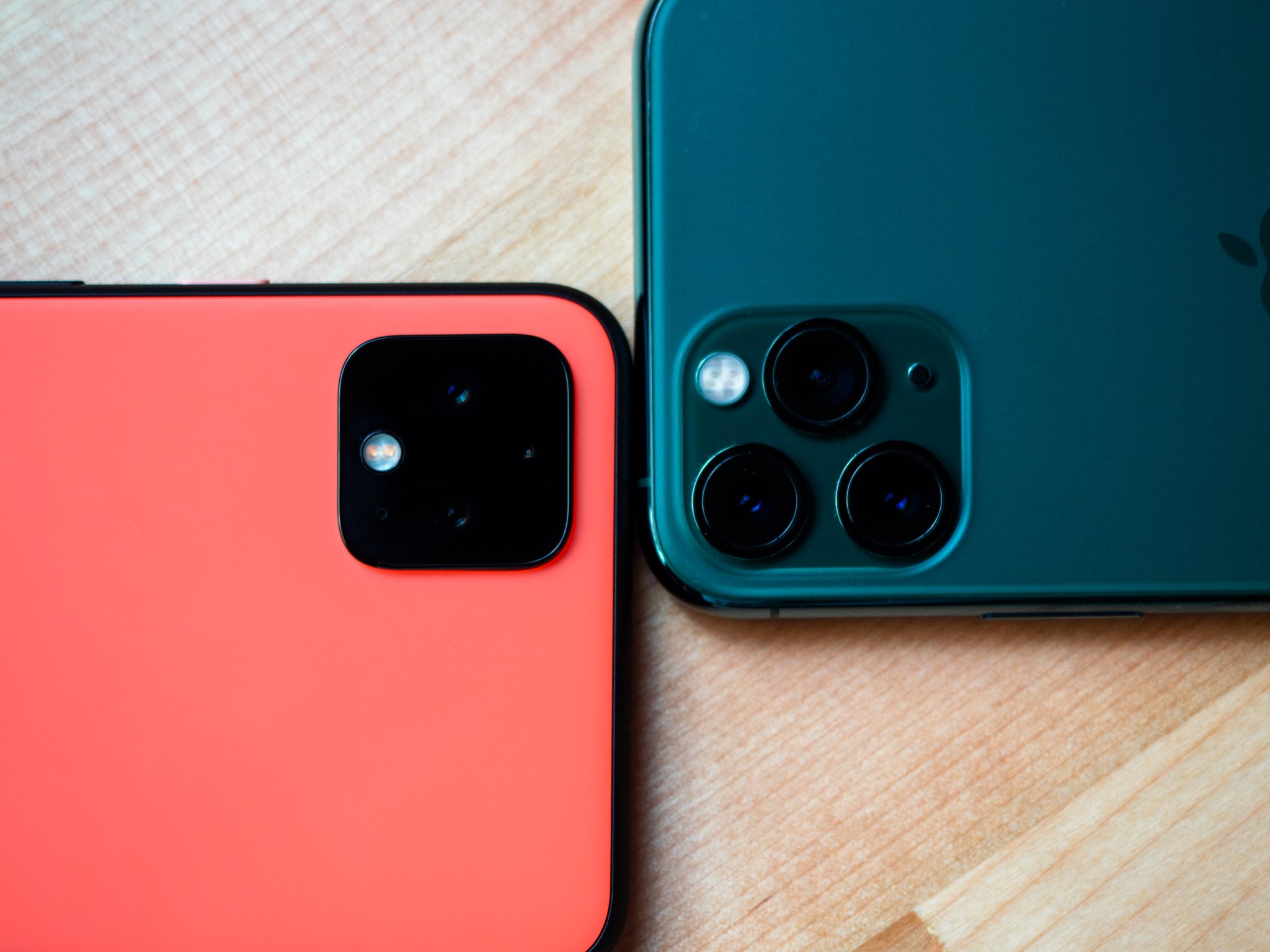
The latest battleground for smartphone cameras is low-light photography. With tiny sensors and space-limited lenses, the quality of the nighttime photos your phone captures is heavily dependent on the software processing rather than the hardware. And that means there are lots of opinionated decisions being made about how to represent a scene. There's no single way, no "right" way, to capture a night shot with a phone — only what the phone's engineers think looks best.
And that opens us up to lots of analysis and spirited debate. The Google Pixel 4 and Apple iPhone 11 are the leaders in low-light photography, so there's no better comparison to make than putting these phones head-to-head to see which one handles the most challenging low-light scenes better.
Intrepid, imposing and brilliantly calm resting in the Hudson River at 2 a.m., was a perfect subject and backdrop to spend hours taking photos with these two cameras to see how they handle the darkest of dark outdoor scenes. Here are the results.
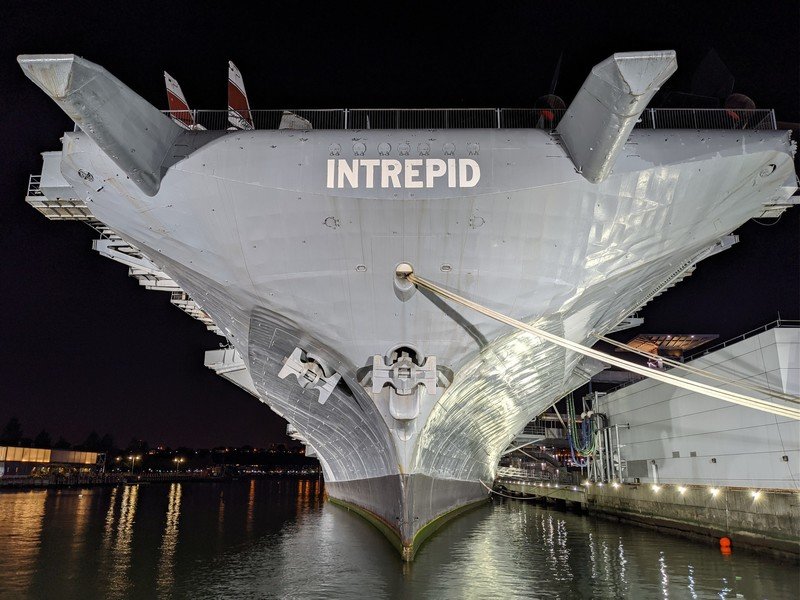
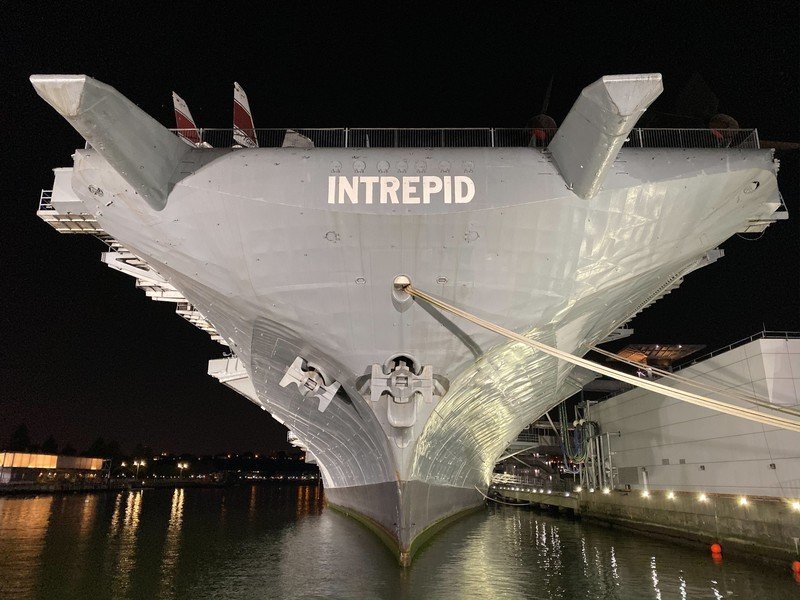
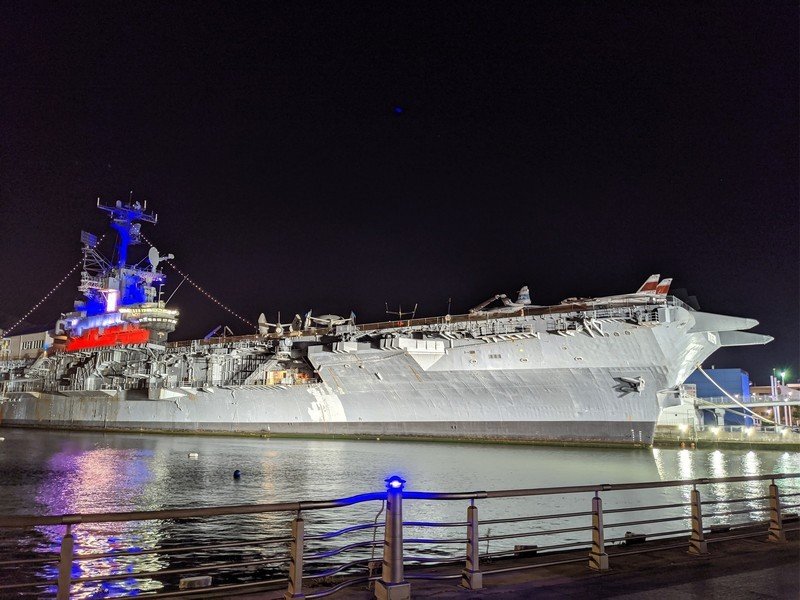
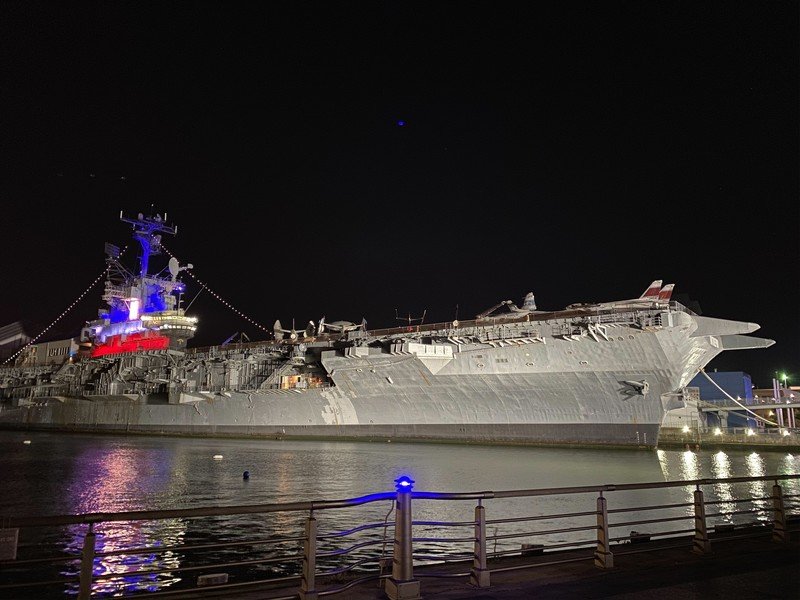
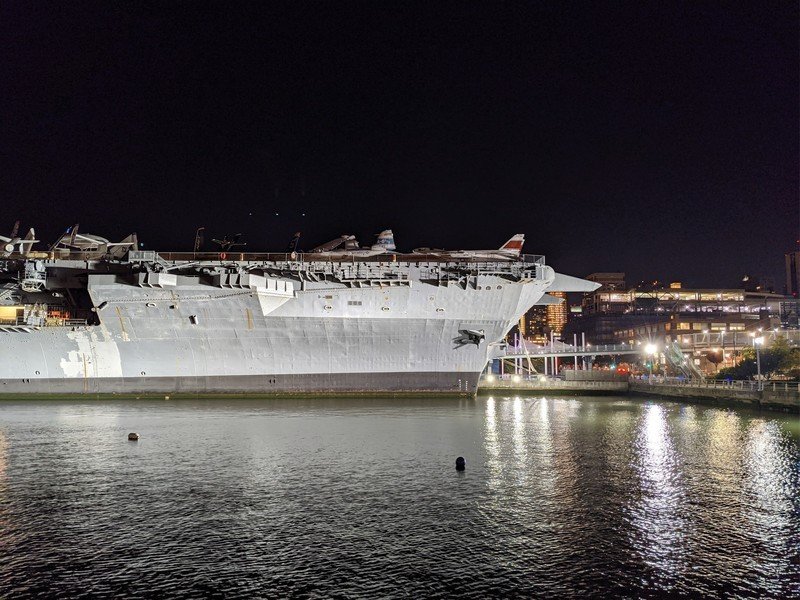
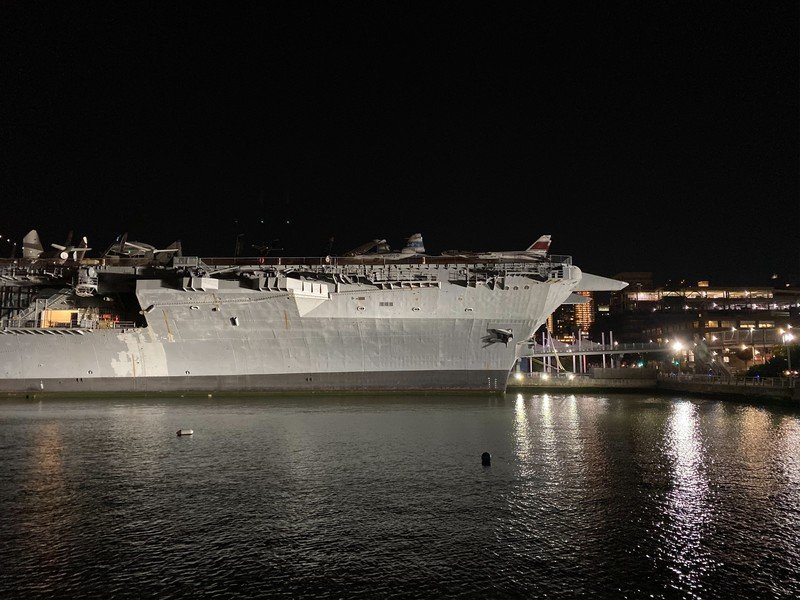
This first collection of shots, besides just being really cool angles of Intrepid, immediately show the philosophical differences between how the Pixel and iPhone process night shots. The biggest themes that differentiate the cameras here: brightness, color temperature and clarity.
The Pixel 4 is brighter, and downright better in sharpness and clarity in details.
The Pixel is notably brighter than the iPhone, and that doesn't just apply to the main subject, but the entire scene. Night Sight on the Pixel boosts highlights and shadows — just look at the foreground in the second image, it's dramatically brighter than the iPhone. Obviously that isn't really what the scene looks like — the iPhone, leaving the foreground dark, is more like reality. And with the dimmer overall scene, you get more of the drama and emotion of a low light shot.
Every Pixel photo is more eye-catching, but it surely isn't as natural as the iPhone's photo.
The Pixel's white balance is much cooler, perhaps too cool in some instances. While the iPhone is much warmer ... perhaps too warm. I would actually prefer to have my photos land somewhere in between, but ultimately this is personal preference. But the combination of cool white balance with a brighter overall scene is in stark contrast to the combination of a warm white balance and darker overall scene. Again the Pixel is more eye-catching, but unnatural in comparison to the more true-to-life iPhone shot. This is a perfect example of how much the post-processing matters to modern smartphone photography.
Now here's where the Pixel is just downright better: it's generally sharper and clearer than the iPhone. It isn't always entirely noticeable when viewed at smaller sizes, but zoom into any of the shots and you'll see sharper fine lines and cleaner details in all of the Pixel's photos. The Pixel is, in many cases, inexplicably sharp considering how little light is available — whereas in many cases I found the iPhone to have softness typical with a standard low-light shot that's using a longer shutter speed.
Get the latest news from Android Central, your trusted companion in the world of Android
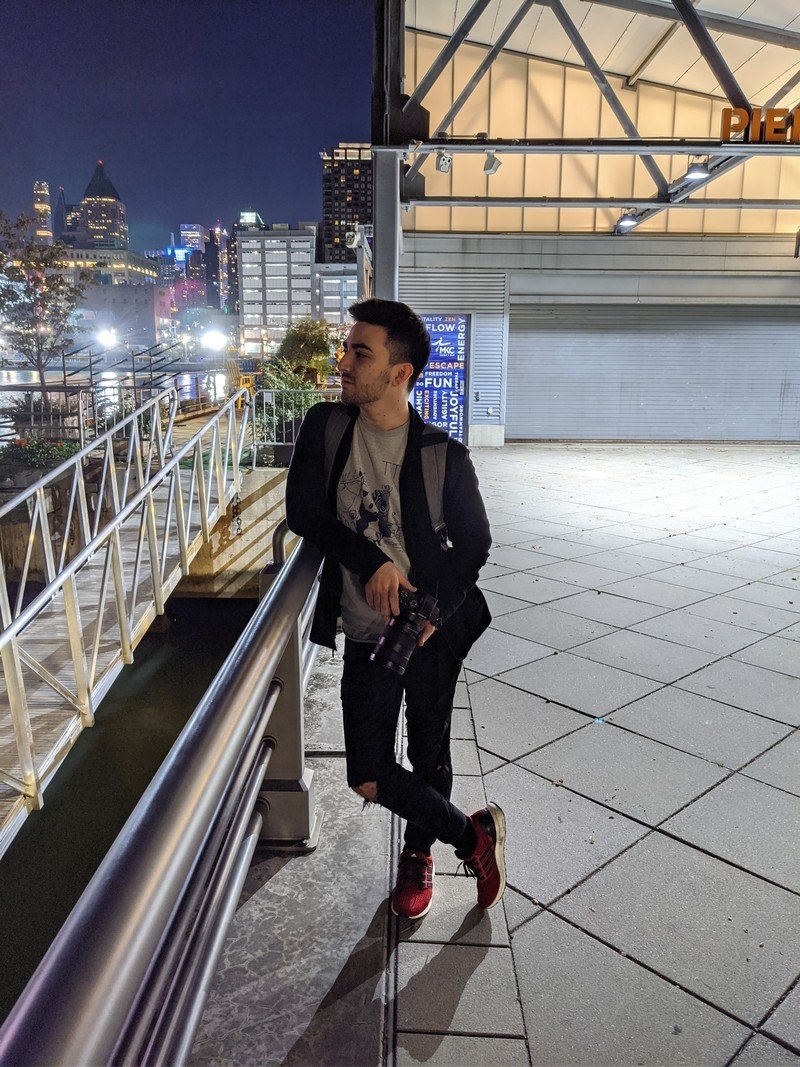
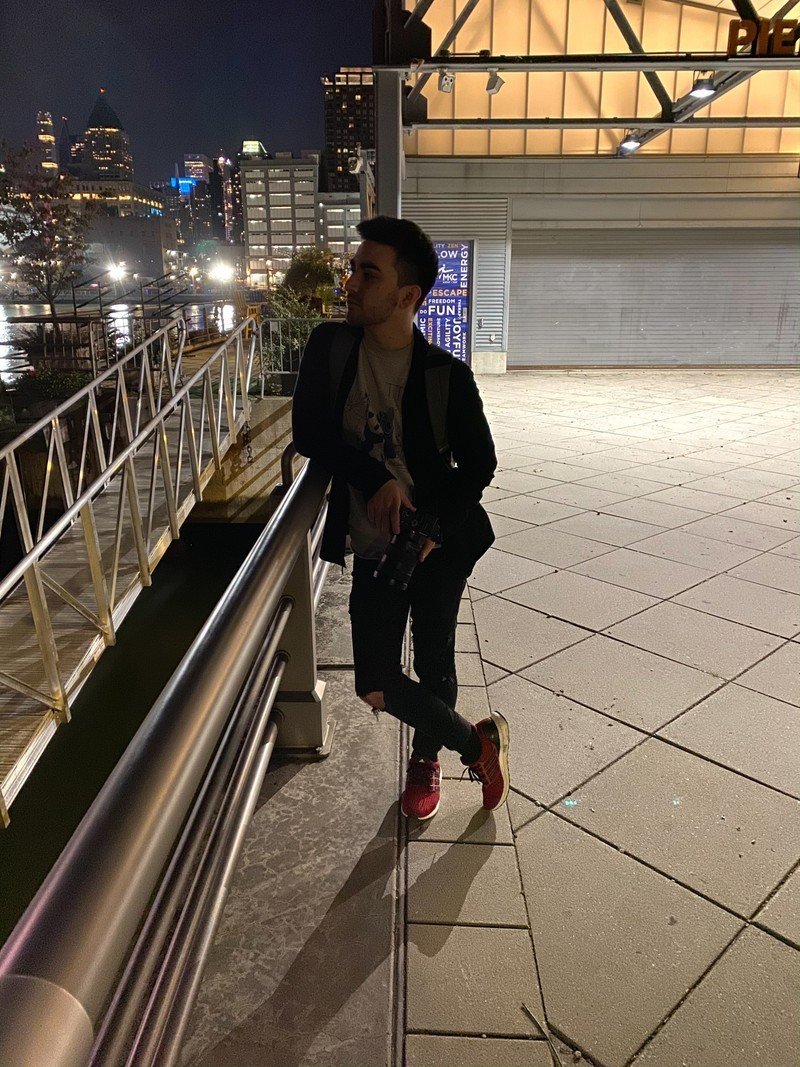
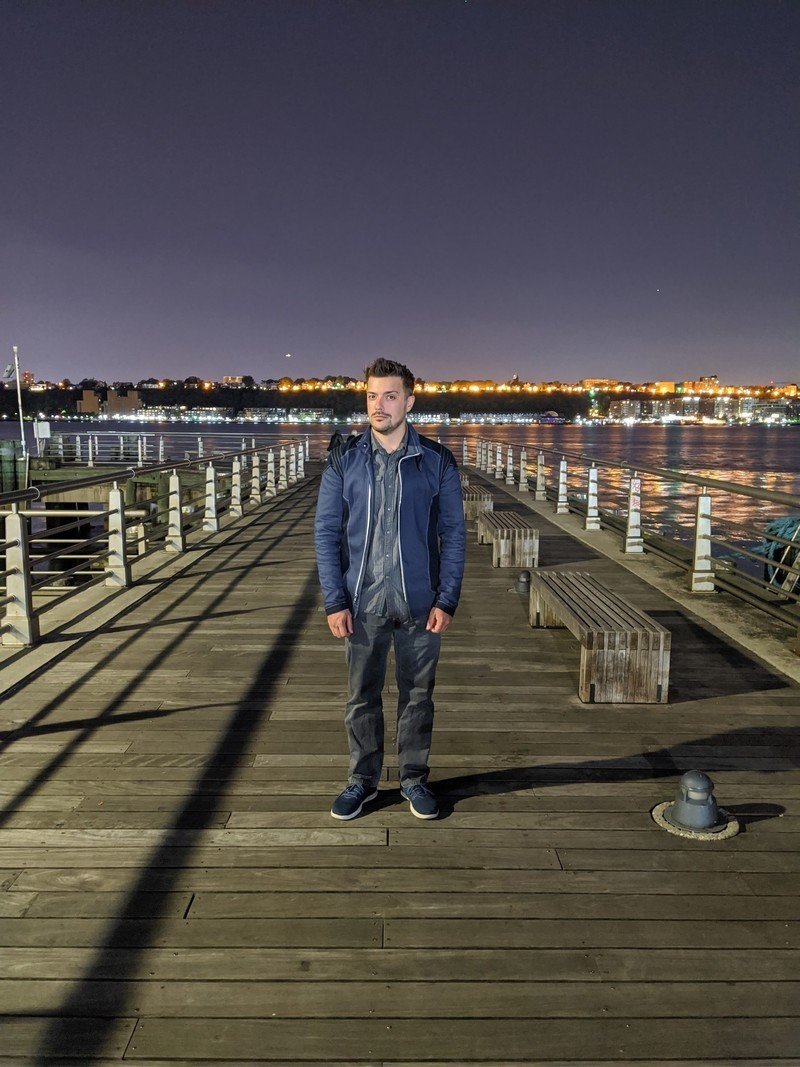
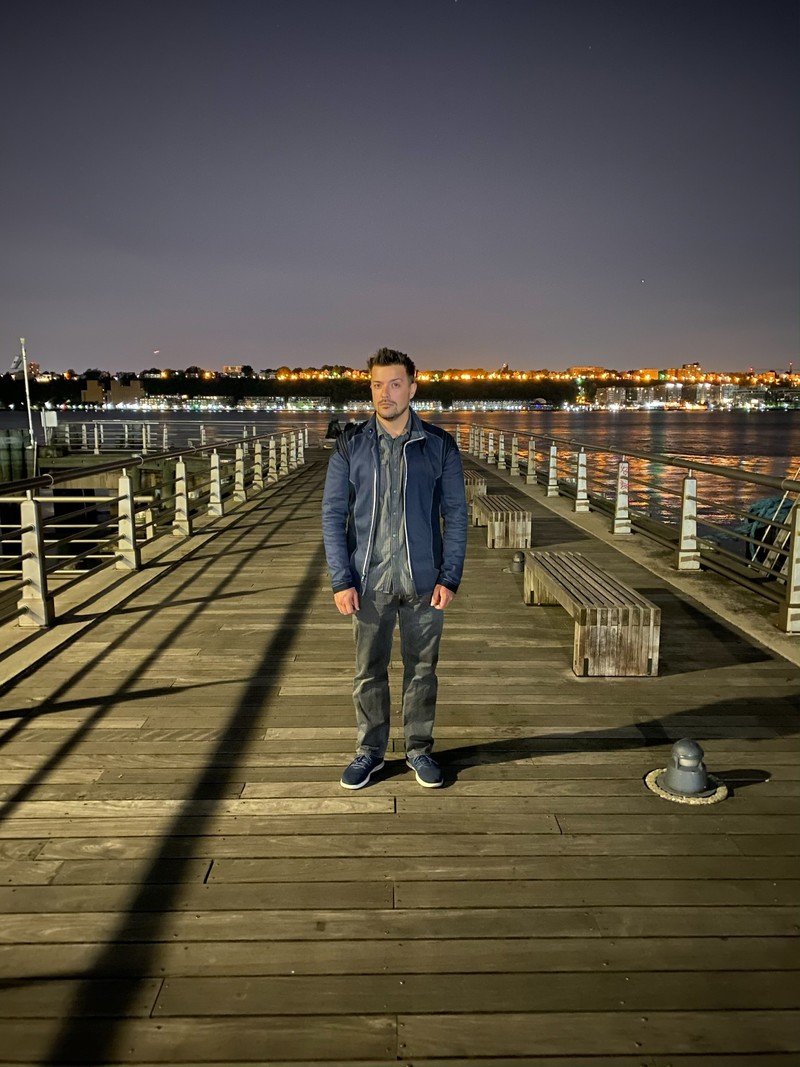
It's relatively easy to recreate a scene of inanimate objects, but our brains are particularly good at picking out issues with photos of humans. We subconsciously know what a person looks like, and sometimes when these night shooting modes do their thing they completely drop the ball.
The Pixel not only nails the scene, it also does a much better job on the actual subject: the person.
The top shot, of our very own Hayato Huseman, is pretty damning for the iPhone. The iPhone completely misses the subject of the photo, plunging everything into darkness — and despite staying dark and neutral, it's still rather noisy. I would've considered this a misfire or a Night mode fail ... but I took the shot multiple times with the same result. The scene is obviously very difficult, with most of the light coming from behind him, but just look at how well the Pixel did — bringing up the brightness across the scene, you can make out Hayato and the entire background. At the same time, zoom in and see just how much detail is left in his face, hair and clothing. That's incredible detail. It's a little over-brightened, and could be warmed up a bit, but I would take the Pixel shot here 10/10 times.
The iPhone may do a better job on the sky and surroundings, but that's not the point of this shot.
Now, the bottom shot, of the one and only MrMobile, is even tougher — not only does the camera need to figure out the person, but also a complex scene of textures in the dock, a city skyline and a night sky. (Also, this one took an extremely long capture time for both phones — but Michael's a pro and stood like a statue for this shot.) Unlike the shot of Hayato, the iPhone actually managed to get the subject and the rest of the scene exposed evenly — though obviously the Pixel is still brighter in both cases, along with its signature cool white balance.
The Pixel, once again, undeniably did a better job on the person. Better detail, better sharpness, better clarity — zoom in and see just how blotchy and soft the iPhone is by comparison. The rest of the scene is much more of a toss-up; the Pixel arguably does a better job preserving detail in the dock, but the iPhone does a better job with the skyline and most notably the sky. The warmer white balance and darker exposure better represent that entire top half of the scene. I don't think that makes up for being so far behind the Pixel in terms of the actual subject and foreground of the shot, though.
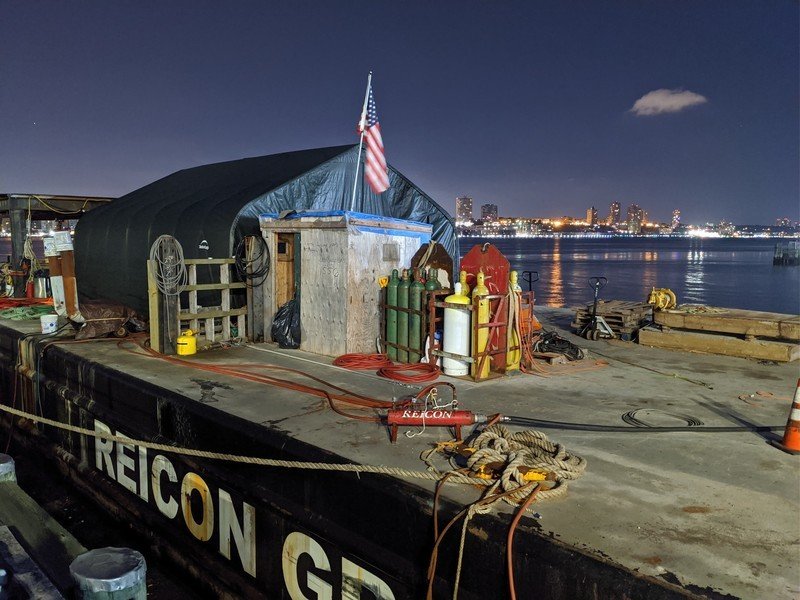
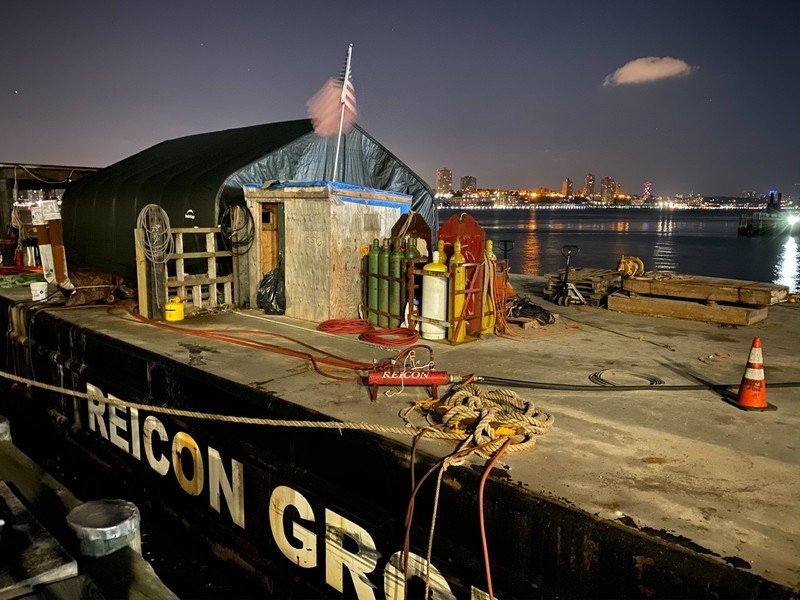
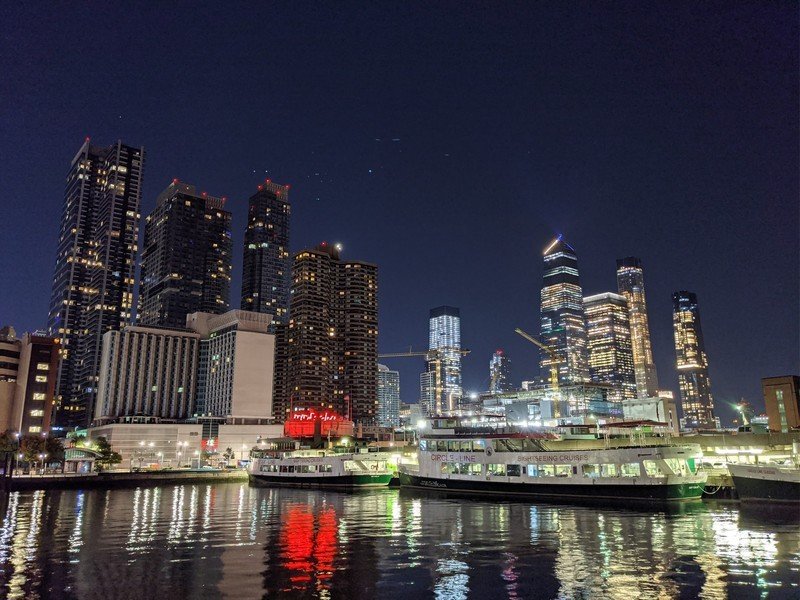
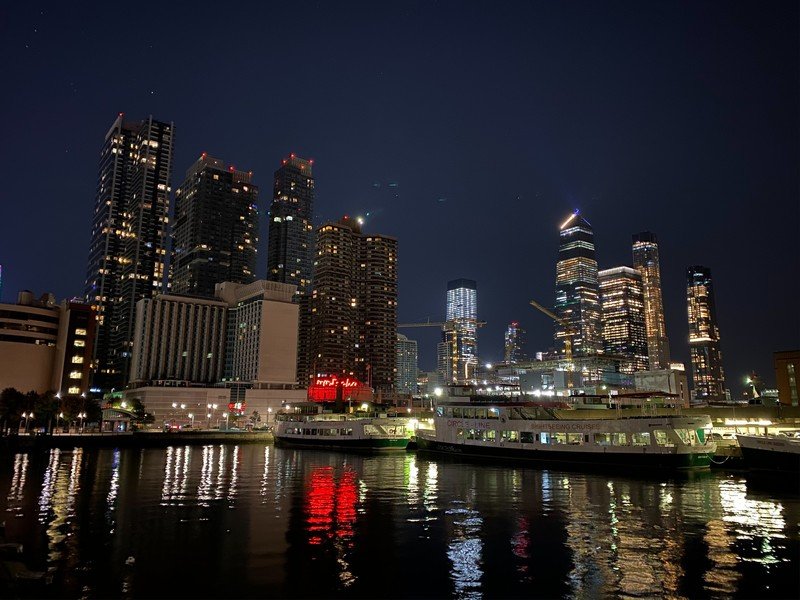
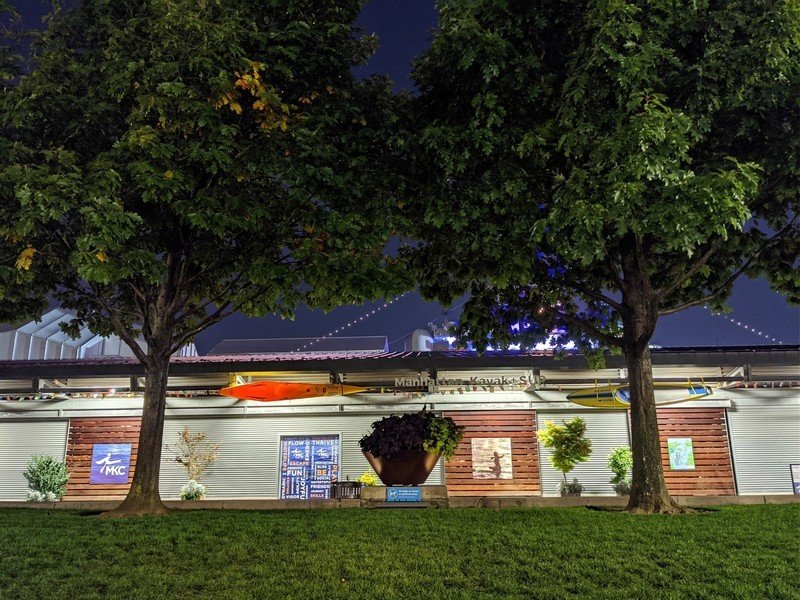
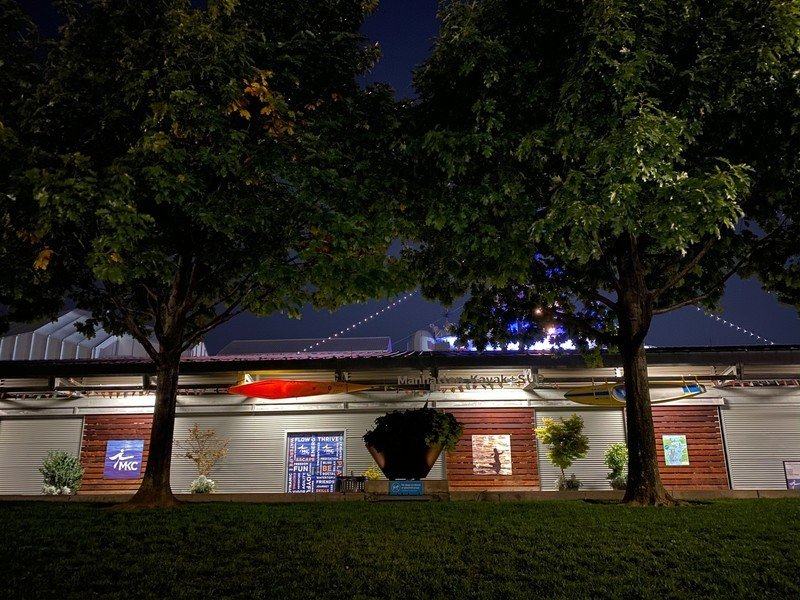
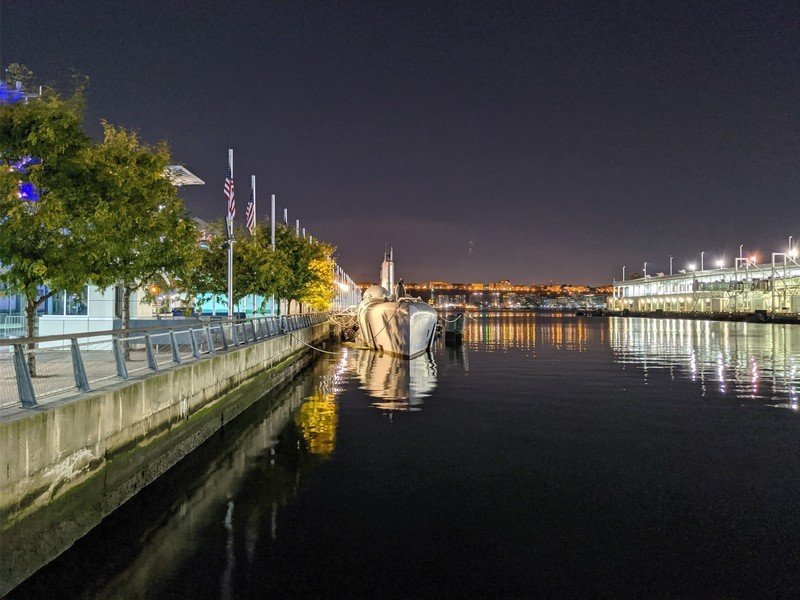
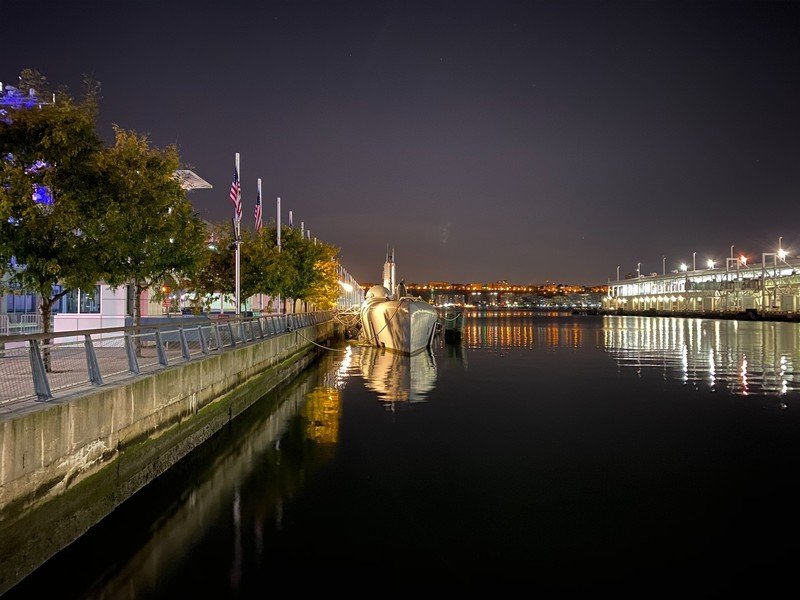
These shots show one of Google's strengths right alongside one of the Apple's: the Pixel's ability to handle motion in Night Sight, with the iPhone's better processing of skies and water at night.
The Pixel can handle movement — be it your hand or your subject — better than the iPhone's long exposure.
Looking at the top photo with the barge, the flag on the shack in the center of the frame tells an interesting tale. Whether through shorter exposures or more clever processing, Google's able to better capture the flag that's slowly waving in the wind compared to the iPhone — yes the Pixel's shot still has a soft flag, but the iPhone took so long to capture that it provided a blurry mess where the flag should be. And that characteristic actually carries over to the rest of the scene, as you start to look around — the entire barge is just a little softer on all of the edges. The water may be calm at night, but it isn't perfectly still — and even the subtle movements of the barge, paired with a handheld shot, show off the weaknesses of relying on slow shutter speeds.
The second shot, a typical nighttime skyline scene, puts the ball back in the iPhone's court. It's this kind of shot that shows the weakness of having Night Sight aggressively brighten a scene. The focal point of the scene is the dark buildings and dark sky — when you over-brighten those things, they don't look great. Building lights get blown out, and the sky gets grainy and blotchy. The iPhone's darker complexion absolutely nails the mood of this kind of shot; and if I were to take it again with the Pixel I'd absolutely crank down the exposure before capturing.
The iPhone unequivocally wins when it comes to those typical dark skyline shots with a flat sky or water.
The fourth shot of the group is the only one in this entire comparison where the iPhone unequivocally wins, top to bottom. And it's an interesting one, because it's a shot where I had the phones braced up against a flagpole to eliminate as much hand movement as possible and let the phones capture for as long as they wanted. In this scenario, the iPhone took advantage to create a clearer, better-balanced shot with better colors and smoother sky and water. The Pixel looks pretty good, but its no match for the overall look and feel of the iPhone's photo.
Armed with this knowledge, go back up and check out all of the photos above. The iPhone 11 reproduces a smoother sky (or water) with less noise in every single one. The parts of the scene where this is apparent can be more or less important in each shot you take, but it's an important component to outdoor shots, and the iPhone is way ahead in that specific aspect.
Does the Pixel 4 or iPhone 11 take better night photos?
The iPhone has its strengths in more accurately representing a scene's brightness and white balance, and does a better job reproducing a smooth dark sky or still water. But the Pixel 4 is sharper and clearer in every case, manages hand shake and subject motion better, and does a dramatically better job making people look great in low-light portrait scenes.
Different types of scenes and situations lean on different strengths of every camera, but in my time testing these phones in these tough-to-manage dark conditions, the Pixel 4 with Night Sight is the winner over the iPhone 11 with Night mode. And both of these phones are considerably ahead of the rest of the competition.

Andrew was an Executive Editor, U.S. at Android Central between 2012 and 2020.

